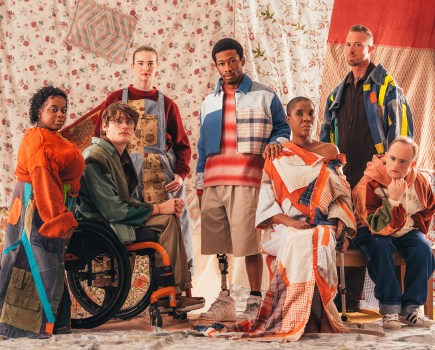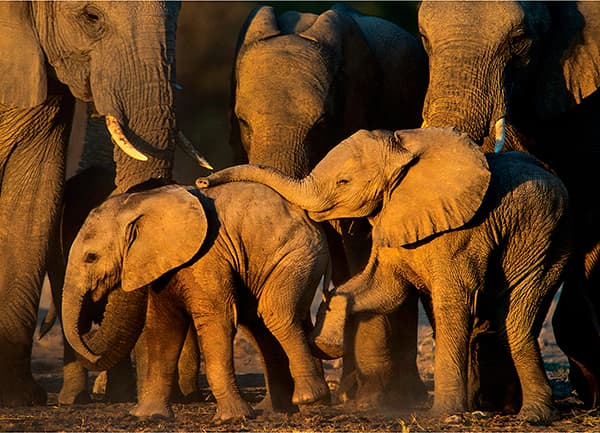
In just the past 16 years around 14 species of animals have become extinct, including the eastern cougar and baiji dolphin. While extinction may seem like the narrative device of literature and cinema, the threat is all too real. Now imagine, if you can, waking up one morning to find that the elephant population in Africa no longer exists. Does it seem like a faraway fantasy, something that couldn’t possibly occur in your lifetime? Does it perhaps help to read that around 30,000 elephants are wiped out every year as a result of poaching? Or that one elephant is killed every 15 minutes?
These are the statistics driving a new publication hoping to help fight the demon of elephant poaching. The book is edited by former AP Editor Keith Wilson, and represents the action by wildlife photographers to use their images to help preserve elephants for future generations. All proceeds from the sale of this book will be used to protect elephants and fight ivory poaching via their partner, the Born Free Foundation.
There will also be a free exhibition titled Remembering Elephants, which will open on 19 September and run for two weeks at London’s La Galleria Pall Mall. Then, on the evening of 22 September, the Royal Geographical Society will host a special evening devoted to elephant conservation, with speakers including Virginia McKenna OBE, Ian Redmond OBE and an exclusive presentation by the celebrated wildlife photographer Art Wolfe. See www.bornfree.org.uk/campaigns/elephants/action/remembering-elephants.
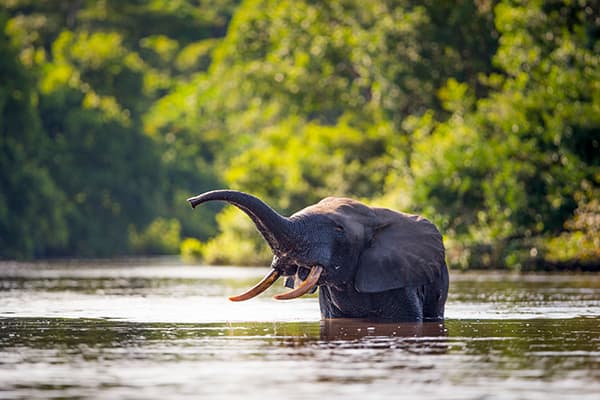
An elephant bathes in the cooling waters of a river. Image by Will Burrard-Lucas
The spectre of elephant poaching has been with us for some time. We’re now immersed in the long-term consequences of poaching. Where are we now with this? How exactly has it affected the elephant population?
You’re right, elephant poaching for ivory has a long history, and each time it has resulted in elephant populations being decimated. However, the current crisis poses the greatest-ever threat to African elephants. Why? Never have elephant populations been so low. Conservationists agree that the total number of elephants is a little more than 400,000. Compare this [number] to the 10 million that were estimated to roam Africa at the beginning of the 20th century – that’s a population decline of more than 95%! On average, one elephant is poached every 15 minutes. That’s more than 30,000 every year. As with rhinos, more elephants are being killed by poachers than [elephants] being born, so extinction in our lifetime is a very real possibility. In fact, elephants are already extinct in some African countries. Elephants are herbivores, so are great consumers of vegetation, but they are also dispersers of important seeds through their dung and therefore fertilizers of plants. In short, elephants are Africa’s wild gardeners, so their loss can have devastating consequences on biodiversity and the landscape.
Why exactly are these elephants being poached?
Purely for the decorative value of elephant ivory, as an ornament or intricate carving. Ivory has no pseudo-science value for traditional Chinese medicine, as is the case with rhino horn, tiger bones and other animal parts. But the ivory tusk of an elephant is prized so much as a prestigious gift or piece of art when carved, that people will pay vast sums of money for it, particularly in China. So there’s a lot of money to be made down the supply chain, and the gangs who hunt elephants are well armed, ruthless and merciless.
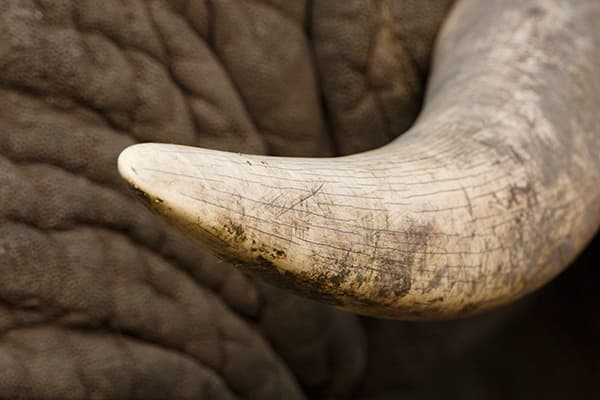
A closer look at the prize the poachers so value – ivory tusks. Image by Marius Coetzee
What is the purpose of Remembering Elephants and how exactly did it come about?
Remembering Elephants has two purposes. The first is to serve as a photographic memorial to these incredible and highly intelligent animals, should they become extinct. The second and primary reason is to raise much-needed funds from sales of the book – and the exhibition prints, I hasten to add – in order to fight ivory poaching and protect elephants
for the future, working with our partner charity, the Born Free Foundation.
Can you tell me who’s involved and what part they play in this project?
The whole project is the brainchild of Margot Raggett, a wildlife photographer who spends a lot of her time in Kenya leading photo tours, mostly in the Maasai Mara. Between us we have managed to enlist 65 of the world’s leading wildlife photographers, including eight overall winners of Wildlife Photographer of the Year. They have all donated a print for the book and most of these are included in the accompanying exhibition in London, and they’re for sale too as limited edition prints! Land Rover has very generously sponsored the exhibition – it could not have happened without them. The unique thing about Remembering Elephants is that it marks the first time so many wildlife photographers have united behind a single conservation cause in one book. That’s why for the author’s name on the cover it says: Wildlife Photographers United.

Three elephants stride across the African plains. Image by Federico Verones
How did you become involved?
Two years ago I was the editor of another wildlife photography art book – As Long As There Are Animals by David Lloyd. We had the launch and exhibition at the Royal Geographical Society. Margot met me there and was so impressed by the book that she told me her idea for Remembering Elephants. She asked me if I would be the book’s editor. I said yes. I must add that the quality and success of this book owes just as much to my colleague and collaborator Eddie Ephraums. This is the fourth wildlife or landscape photography book we have produced together.
How will the proceeds of this book be used?
I’m pleased to say that some of the proceeds have already been allocated! Through our charity partner Born Free, we purchased a pair of night-vision goggles for the rangers at Meru National Park in Kenya, to help them track poachers at night. Money has also been allocated to the repair and maintenance of vital equipment to help park surveillance. We have agreed [on a budget] with Born Free for all the money we hope to raise to directly benefit elephant conservation in several countries where funding is most needed.
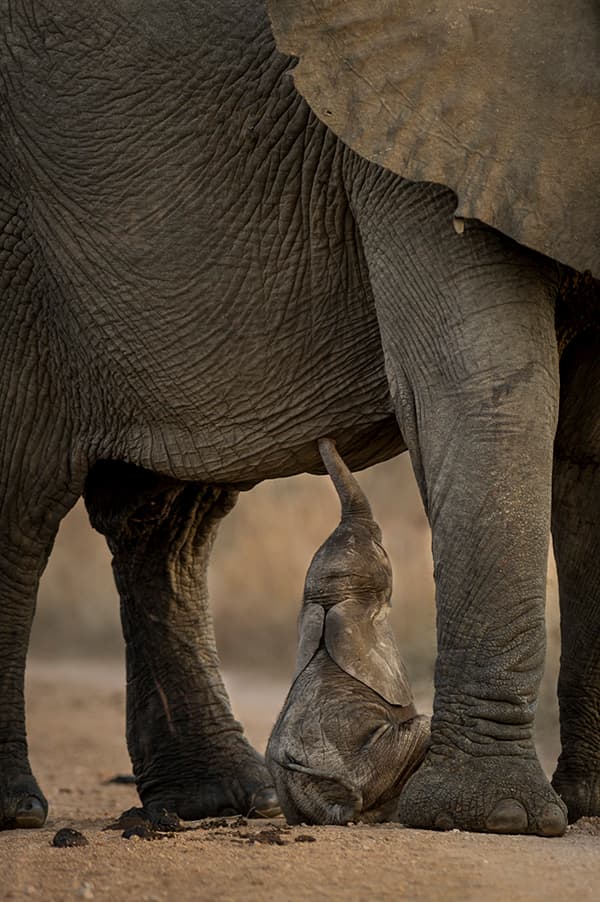
An elephant calf feeds from its mother’s milk. Image by Ross Couper
What role can wildlife photography play in assisting the conservation of species?
A very good question. Many photographers already help wildlife conservation charities, usually by donating their images to the charity they support. Beyond that, their input and influence seem to diminish, which is unfortunate. I think we need a more collaborative approach. It’s about the effectiveness of a whole being greater than the sum of its parts.
More than ever, wildlife photographers are trying very hard to use their images to create greater public awareness about endangered species, and supporting the conservation groups in the best way they can. But creating greater public awareness has no lasting impact without generating a response that leads to action. Photographers need to be more active in this regard; they need to think beyond creating awareness and have a bigger say in how awareness can result in direct action, either through the conservation charity they support, or maybe as a like-minded group with their own agenda, such as Wildlife Photographers United, as suggested by this book. After all, wildlife photographers often see the realities of the situation long before anyone else has a clue that there’s a serious problem.
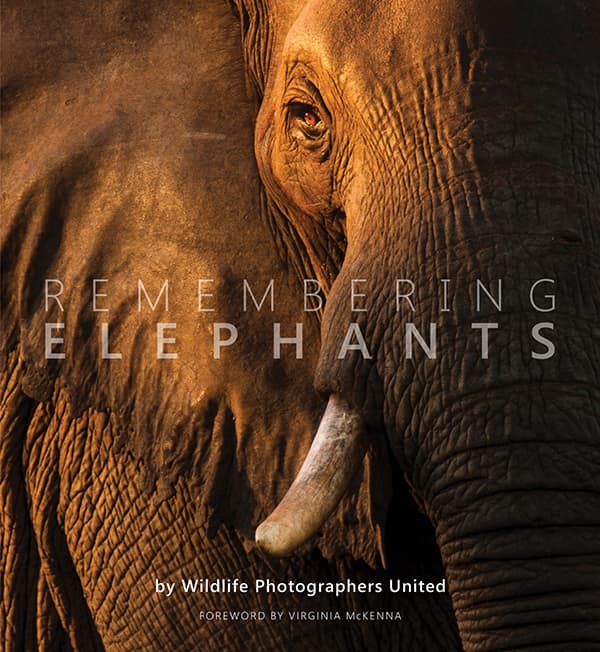
You can order a copy of Remembering Elephants from give.bornfree.org.uk/products/remembering-elephants-916. The book, priced £45, is supported by an exhibition (sponsored by Land Rover) at La Galleria, Pall Mall, London SW1Y 4UY from 19 September-1 October (www.lagalleria.org).





